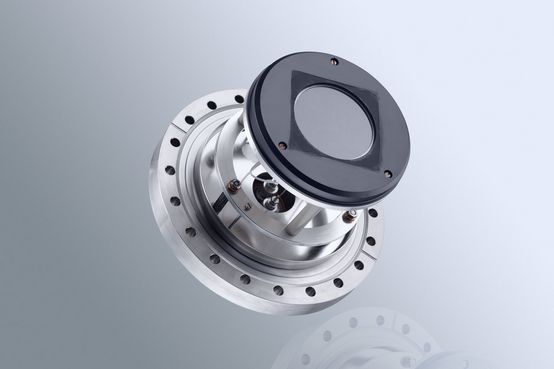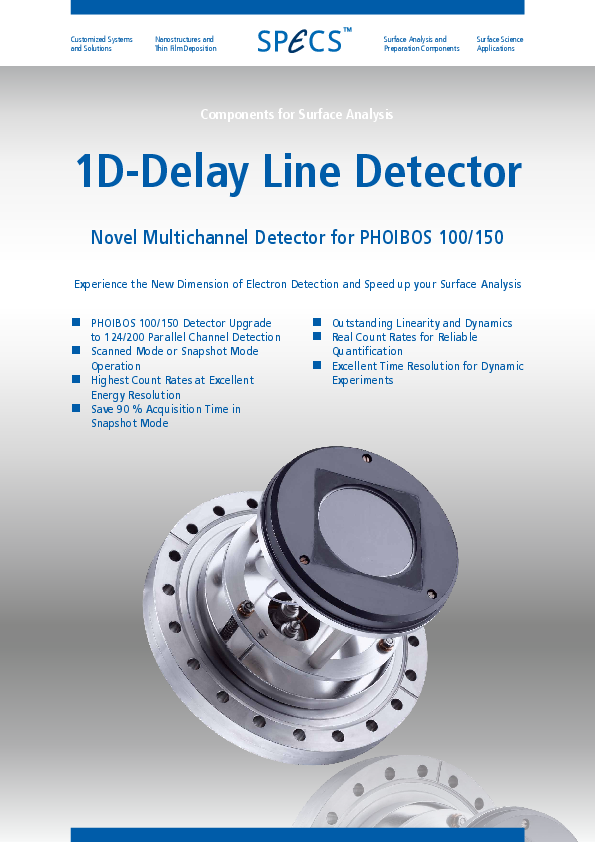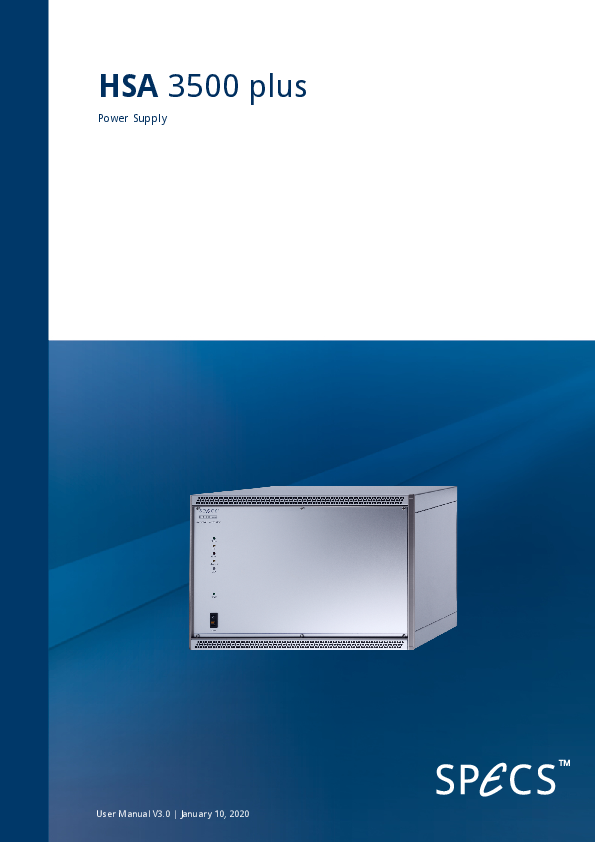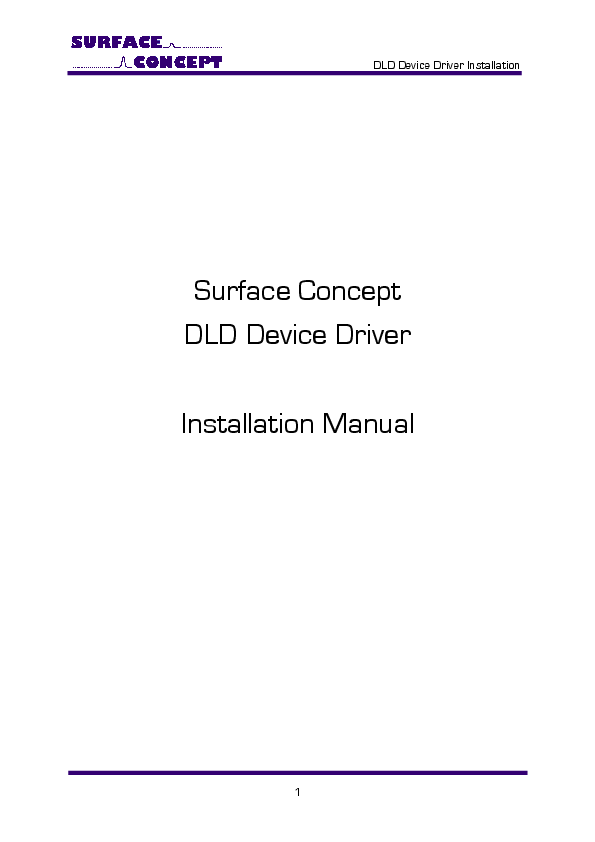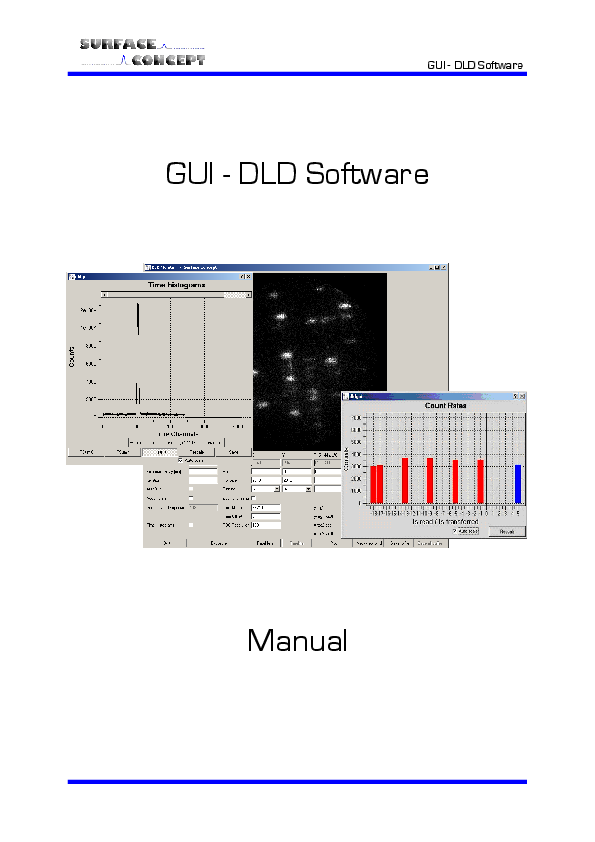 Detail
DetailPHOIBOS 150 1D-DLD
High Performance Hemispherical Energy Analyzer with 1D-DLD Detector for UPS, XPS, ISS and LEISS.
The PHOIBOS 150 hemispherical energy analyzer is a powerful tool for modern photoelectron spectroscopy. This analyzer can be operated in all relevant analysis modes, such as XPS, UPS, as well as AES, ISS and LEISS. Its design and the modular supplementary hardware makes this analyzer the most versatile PES analyzer in the market. It can easily be upgraded with all available SPECS detection systems.
The integrated 1D-DLD detector is the best performing detection system available. The direct detection of electron signals yield quantitative counts per second (cps). The powerful electronics can aquire ultrafast snapshot measurements of the energy spectrum with up to 1200 energy channels as well as continous sweeping energy spectra. Its low dark count rate and high linearity make this detector outstanding for XPS analyis.
The energy analyzer section is equipped with 8 customizable entrance and 3 exit slits for UPS and XPS. The analyzer comes with a highly stable power supply, the HSA 3500 plus, for best performance in a wide kinetic energy range up to 3500 eV kinetic energy.
SPECIFICATIONS
| Energy Dispersion by | Hemisphere |
| Slits/Apertures | 8 Entrance, 3 Exit slits and Iris aperture |
| Lens Modes | |
| Acceptance Angle | ±15° |
| Kinetic Energy Range | 0 - 3500 eV |
| Pass Energies | 0 - 550 eV continously adjustable |
| Detector | 1D-DLD Detector |
| Detector Channels | Max. 960 energy channels (240 and 120 channels for binning 4 and 8, respectively) |
| Measurement Modes | |
| Energy Window | 20% of Pass Energy |
| Electronics | HSA 3500 plus HT 100 |
| Working Pressure | 10-11 to 10-7 mbar |
| Angular Resolution | < 0.5° |
| Energy Resolution | <5 meV for XPS |
| Lateral Resolution | < 100 µm |
| XPS Count Rates UHV | Ag 3d measured with XR 50 300 W MgKa > 3 Mcps @ 0.85 eV, > 9 Mcps @ 1.00 eV |
| Mounting Flange | DN100 CF |
| Magnetic Shielding | Double µ-Metal Shielding |
| Working Distance | 40 mm |
| Electric Isolation | up to 7 keV |
SPARE PARTS

Spare channelplate set for PHOIBOS150 1D-DLD 60 mm
Spare electrical feedthrough for all DLD detectors. Connection flange for the ACU unit

Replacement feedthrough for PHOIBOS Release R5 & R6 iris mechanism

Replacement spindle for PHOIBOS Release R5 & R6 iris mechanism

